Uncanny X-Men, Part 5: Issues #40-48: Death and Separation
Welcome to the 5th installment of my reread of the X-Men from 1963 forward. This is a cool one, going from cover date January, 1968 to almost the end of 1968. There are some big stories and even the middling stories in this run have their charm, and the best ones hold up as exemplars of the best of the Silver Age, including an Avengers-X-Men cross-over. If this it the first of these posts that you noticed, my can find my previous ones here:
- Part I: X-Men #1 (Nov, 1963) to X-Men #20 (May, 1966)
- Part II: Early X-Men guest appearances (1964-1965), X-Men #21-23 (1966), and X-Men: First Class Volume I (2006)
- Part III: X-Men: First Class, Volume II (2007)
- Part IV: X-Men #24-39: The Middle Years of the Original Team
I wish I could say that this run opens with a bang, but after the work that went into ending the Factor Three multi-part story line, Roy Thomas and company come out with a forgettable (or best forgotten) Frankenstein’s monster story in issue #40. Issue #41 follows up slightly better, because although they’re fighting another poorly-drawn hulking brute, it’s about a secret subterranean civilization that have all died due to human action.
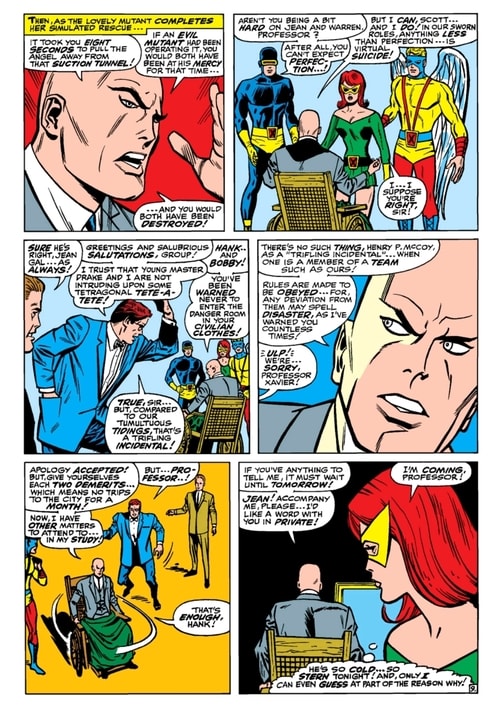
Luckily, the monster-of-the-week plot with this underground villain (Grotesk) is not the core of the story. Professor X’s behavior is erratic and he’s spending a lot of time concocting stuff with Marvel Girl. In fact, he’s been pushing the X-Men pretty hard and pitilessly over the last few issues. Eventually, he agrees that they all need to go fight Grotesk and he goes with them. In defeating Grotesk and saving the world, the Professor is caught in an explosion and dies!
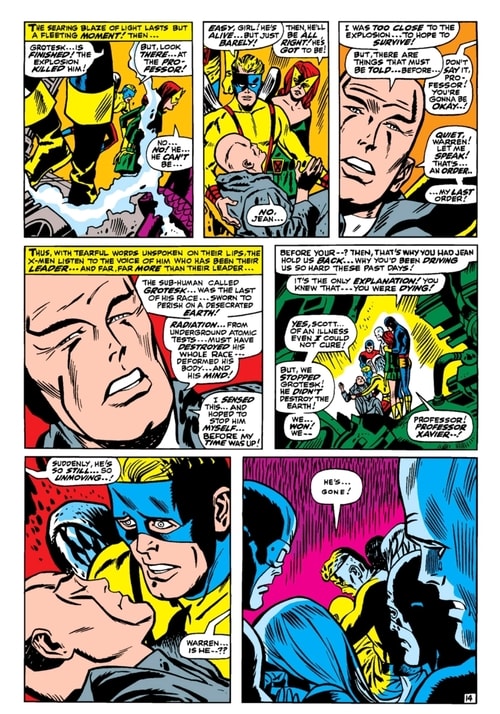
It occurs to me that this story was published in 1968. I’m wondering if this is the first major Marvel Comics death? Only a year before, Ferro Lad of the Legion of Superheroes at DC had sacrificed himself, but I can’t think of an earlier death of such a major Marvel character. I imagine that this was a shocking development to readers.
Roy Thomas and George Tuska certainty took the death seriously in issue #43, with some of the most beautiful art I’ve ever seen Tuska do. I am not a Tuska fan even a bit, but his art here is emotive, communicating with expressions and body language.
Quicksilver attends Professor X’s funeral, looking for medical help for his sister, but out of fear, returns to Magneto. Seeing his arch-rival in the grave, Magneto decides that this is the time to wipe out the X-Men and the Avengers together. The X-Men try their best, but are captured.
As a personal aside, this 3-part story is one of my earliest access points to the original X-Men through the reprint series Marvel Triple Action. I so much appreciated getting these old stories because other than reprints, my only knowledge of the Silver Age was whatever Claremont/Cockrum/Byrne made reference to. Anyway, in issue#44 Angel breaks free and Scott, still trapped, tells him to go for help.
Warren flees to get help from the Avengers, but in the middle of the Atlantic, he runs into Red Raven, a golden age Timely hero who came from a lost world. This makes sense because Roy Thomas’ love of golden age comics is well-known. And, by issue #44, it had been two issues since Thomas had leaned on the pulp hidden civilization tradition, so we were due for one. Warren escapes and wings his way for help. All joking aside though, this is a great little solo adventure for Angel, which only served to heighten the reader tension for what’s happening with the rest of the X-Men.
Issue #45 was one of those reprints I found, featuring nearly an issue’s worth of Cyclops versus Quicksilver with an unexpectedly large dose of philosophy as Pietro tries to persuade Scott that Magneto’s vision of the future of mutanthood is the best way. Thomas was firing on all cylinders in this arc, grabbing hold of the key theme associated with the X-Men, that we hadn’t seen since they were on trial for crimes against the Homo superior in issue #38.
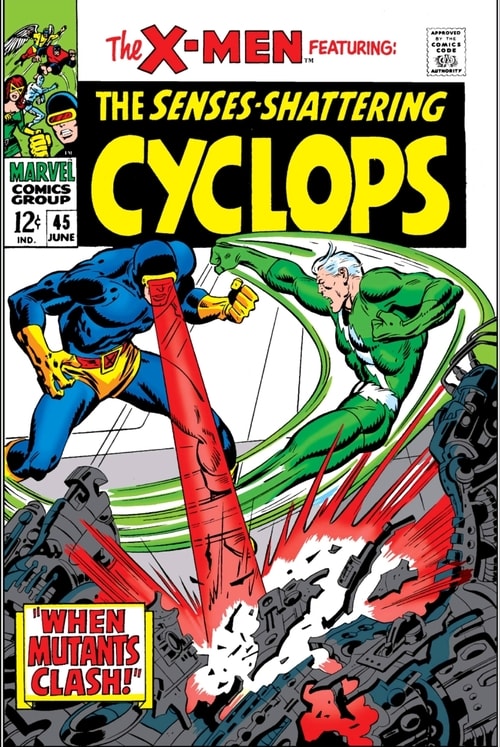
Cyclops defeats Quicksilver just as the Avengers arrive and they don’t look happy.
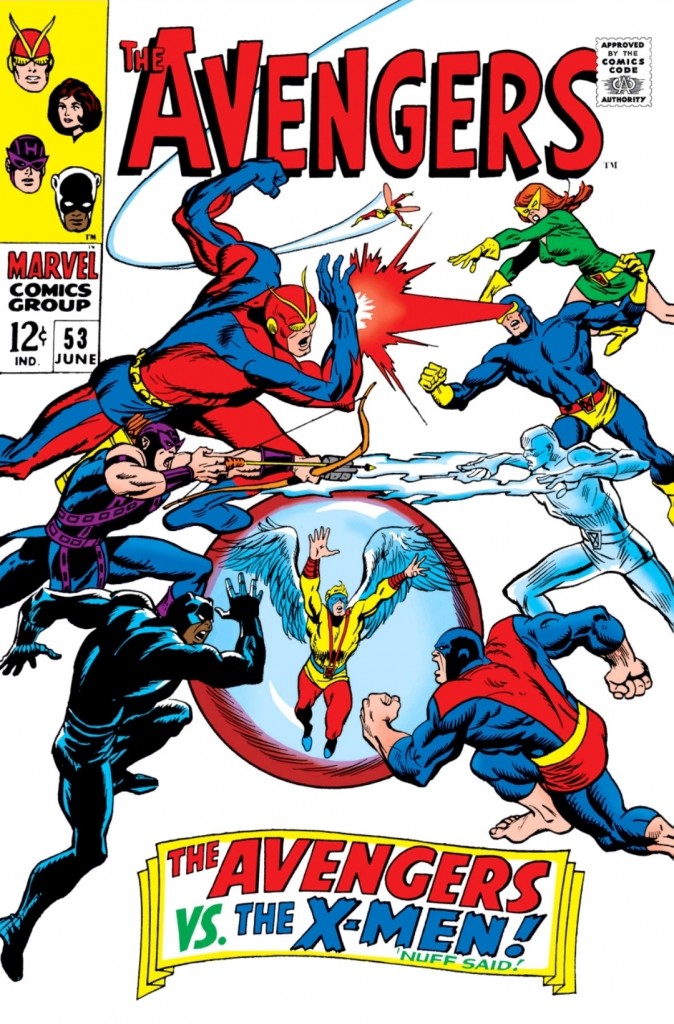
In this cross-over issue with the Avengers, Angel has found them, but the mutual distrust is strong and it turns out that Angel was carrying over a listening device, planted by Magneto, so at best, Magneto is waiting for the Avengers and at worst, Warren is working with him. We the reader find out that the plot is mind-controlling the X-Men to attack the Avengers (a little like the plot to FF #28, which I covered in blog post #2).
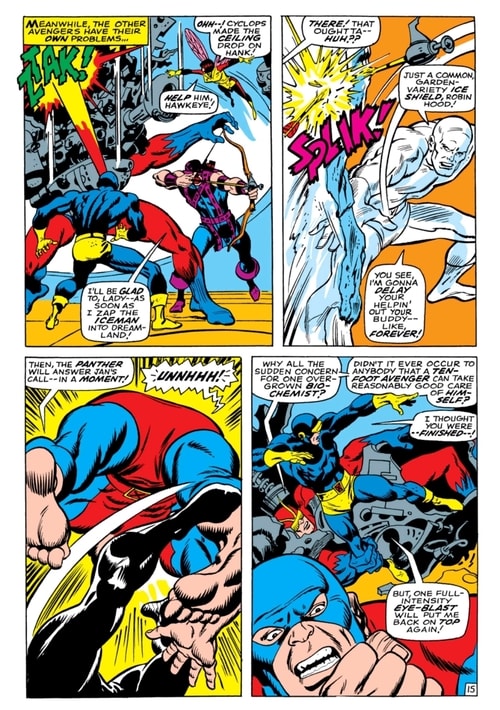
Buscema’s art is beautiful and Magneto gets his comeuppance from an unexpected source and appears to die in the explosion of his island, which the X-Men, Avengers and the remnants of the Brotherhood of Mutants all manage to escape. This 4-issue story remains one of my favourites of the Silver Age.
For plot logic that is never quite clear to me, the X-Men are encouraged by the FBI to disband after the Juggernaut attacks them. The result is that Beast and Iceman are one team, Cyclops and Marvel Girl are another and Angel is sort of hovering (sorry!). At first or second read issues #47 and #48 feel like drifting or filler, but within the context of the whole series, I see a couple of reasons that make me think that his was probably a smart(ish) narrative move.
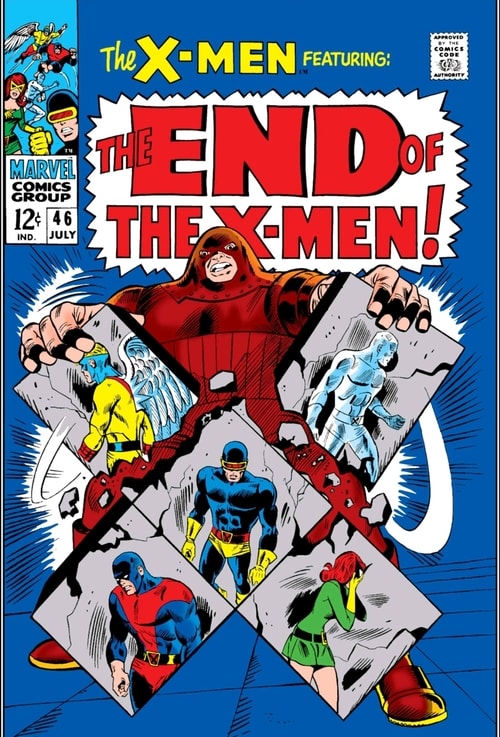
Firstly, it’s always a little fun to see superheroes broken into smaller teams where characters are required to interact together. This gives us a chance to see Bobby and Hank in real life, out with Vera and Zelda again and these are wonderful Marvel Silver Age moments. It’s not their fault that they draw a lame D-list villain.
We also get some Jean and Scott time. Jean has taken a job as a model and the photographer is hitting on her. This is a wonderful moment where Scott is about to kick the guy’s butt, but gets drawn away by a few other models who find him dreamy. Which then sets off Jean’s jealousy. These are fun moments that show how much Jean and Scott are into each other.
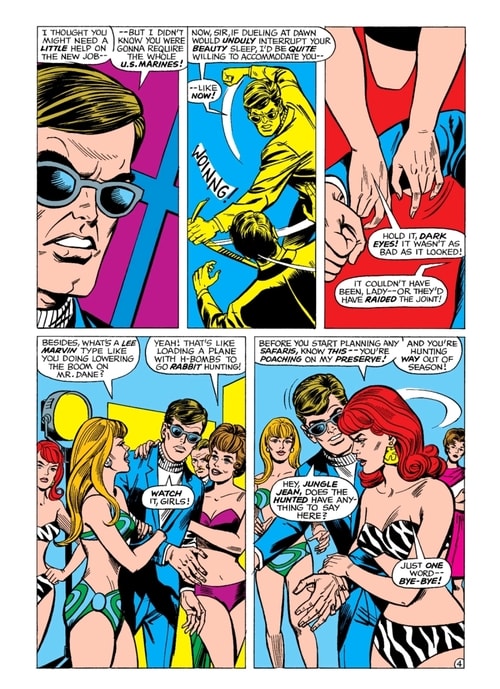
Unsurprisingly, Marvel Girl and Cyclops work well as a team when fighting robots. #48 isn’t a peak issue of this run, in part because this story feels like a filler and partly because Quasimodo, the brains behind the robots, is strictly a D-list villain who had only a couple of panels of fleeing.
However, I enjoyed this portion of the Silver Age X-Men and in two weeks, we’ll be starting the last flourishing of the original X-Men, with Steranko, the introduction of a new X-Man.
I hope you’re having fun with this reread. I am.
If you want to catch up on any of my other posts about the X-Men, they’re below:
- Part 0: A Fresh Look at X-Men Continuity: Ed Piskor’s Grand Design
- Part I: Introducing The Strangest Super-Team of All: Uncanny X-Men #1 (Nov 1963) to #20 (May 1966)
- Part II: Early Guest Appearances (1964-65), Uncanny X-Men #21-23 (1966), and X-Men: First Class Volume I (2006)
- Part III: X-Men: First Class, Volume II (2007) and First Class Finals
- Part IV: Uncanny X-Men #24-39: The Middle Years of the Original Team
- Part V: Uncanny X-Men #40-48: Death and Separation
- Part VI: Uncanny X-Men #49-53: Reunion and Family and Steranko
- Part VII: Uncanny X-Men #54-58 – Havok and Neal Adams
- Part VIII: Uncanny X-Men #59-66: The Savage Land and the End of the Silver Age X-Men
- Part IX: Filling in the Corners of the Original X-Men with Savage Hulk #1-4
- Part X: John Byrne’s The Hidden Years #1-4
- Part XI: Storm, the FF and Phoenix in John Byrne’s The Hidden Years
- Part XII: X-Men Guest Appearances in 1971-1972 and Hank gets Furry!
- Part XIII: Englehart’s Bronze Age Monster Horror – The Beast
- Part XIV: 1973 and 1974 – Magneto, the Hulk, Banshee and post-Watergate Captain America
- Part XV: 1974 and 1975 – The Last Tales of the Original X-Men
- Part XVI: Enter Wein, Claremont and Cockrum in 1975
- Part XVII: 1976 — Sentinels in Space and the Rise of Phoenix
- Part XVIII: Juggernaut and Magneto — For the Very First Time
- Part XIX: Phoenix, Firelord and the Imperial Guard
- Part XX: Iron Fist, Blame Canada and Some Strike-Outs
- Part XXI: Epic Magneto Triumph and more X-Men Death!
- Part XXII: 1978 — The Savage Land, Japan and Psionic Throwback Thursday!
- Part XXIII: 1979 — Chaos in Canada with Alpha Flight!
- Part XXIV: Arcade, Murderworld and their First King-Sized Annual
- Part XXV: The Proteus Saga and My First Comics!
Derek Künsken writes science fiction in Gatineau, Québec. His first novel, The Quantum Magician, a space opera heist, was a finalist for the Locus, Aurora and Chinese Nebula awards. Its sequel, The Quantum Garden is on sale now. His third novel, The House of Styx, has just been announced jointly by Solaris Books and Analog Science Fiction and Fact who will be publishing it in hardcover and serial form, respectively.
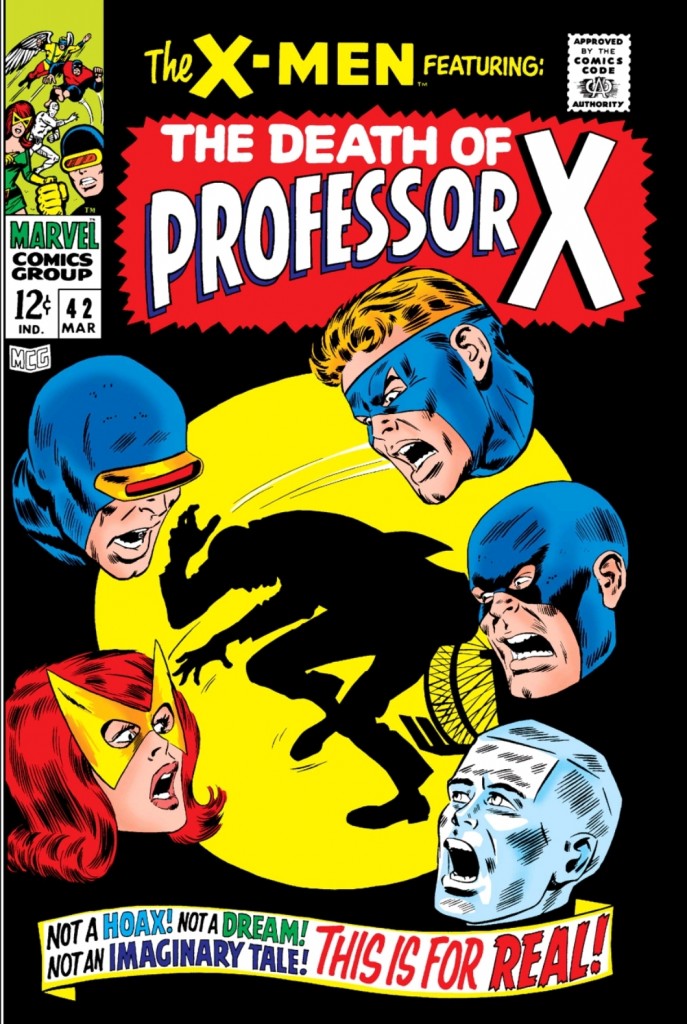
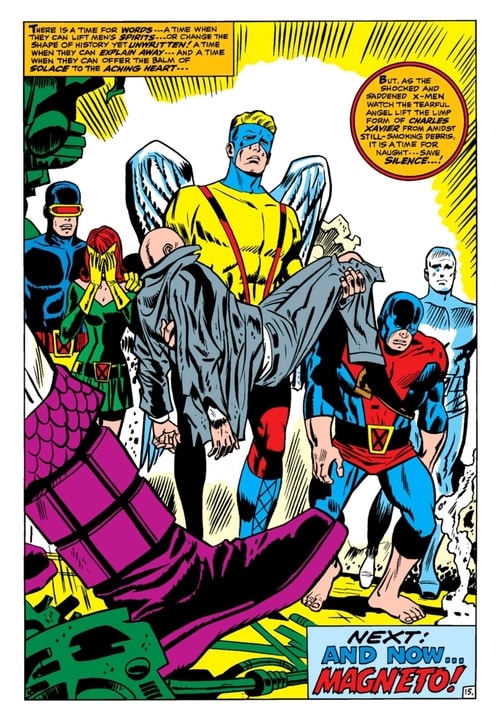
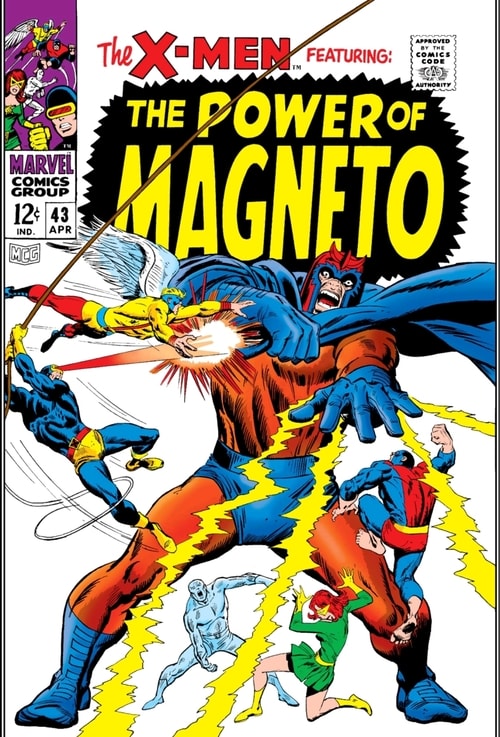
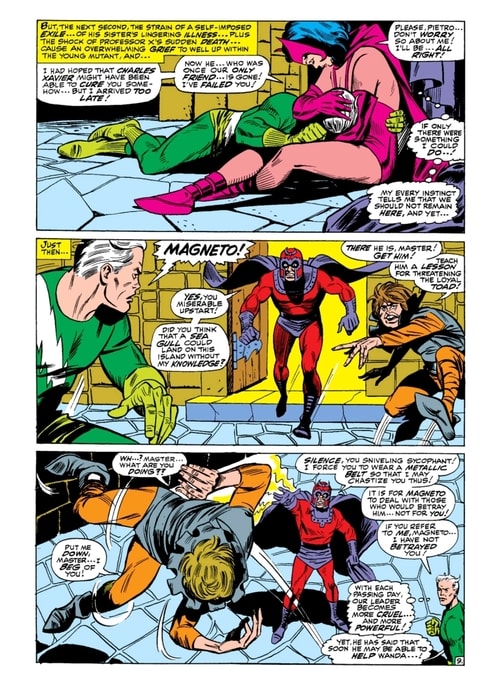
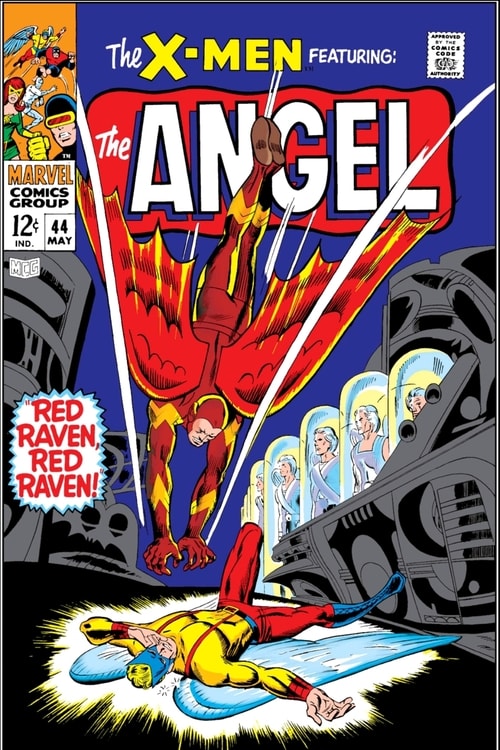
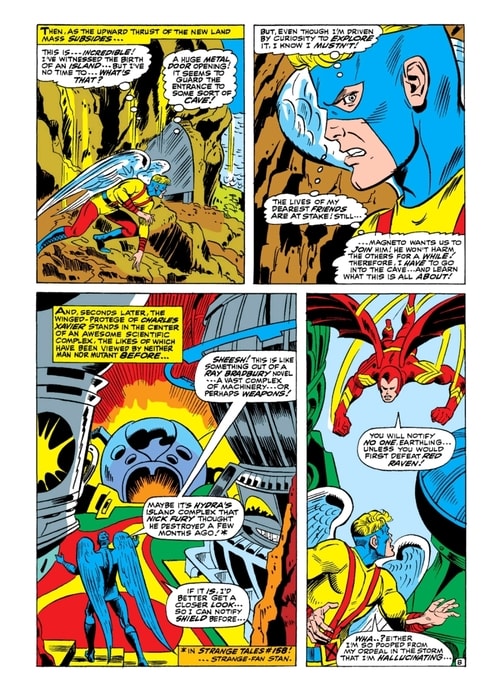
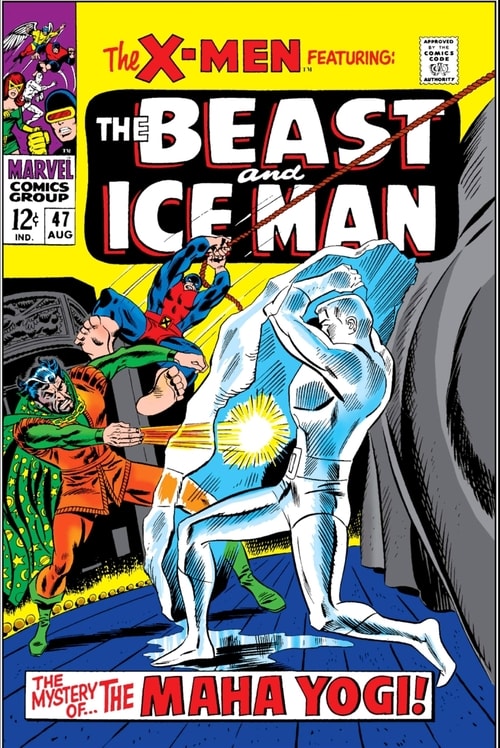
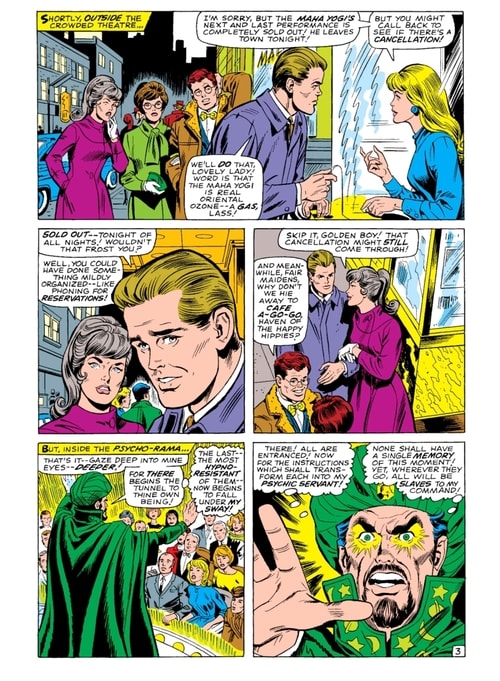
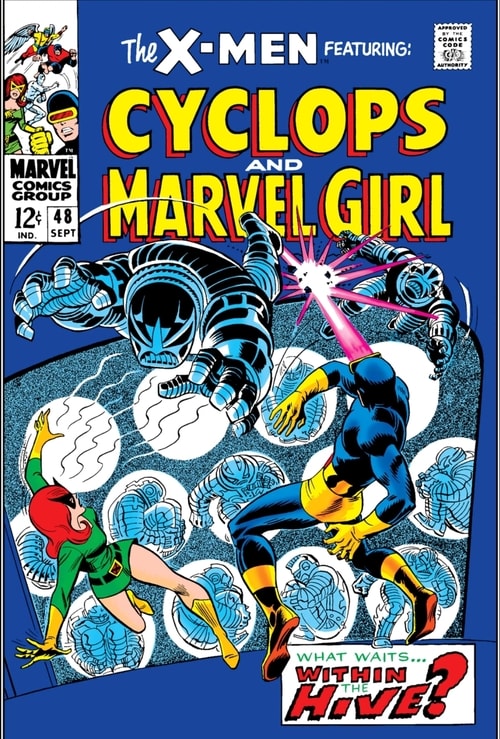
These reviews have been fun to read. But I feel like you’re making them sound better than they really are.
After the first post I thought “do I want to buy these early issues in epic format? It’s a nice lead up to claremont” before I came to my senses and realized I’m not that big of a x-men fan and these issues are towards the bottom half of x men comics. With the obvious exception of the Neal Adams comics. Those were so ahead of their time.
Hey Glenn!
I think that happens with anything we read from the past. I find the style of Dune to be hard to read anymore. I read Mythago Wood with a more gendered lens to realize why none of my women friends seem to enjoy it. The art in comic books is now so sophisticated that looking back at the Silver Age, I find I often have to appreciate different things about the art than just feel it. All that being said, I think that, for the X-Men, I’m willing to take their Silver Age run with a fair bit of salt and to find unexpected charms because I happen to be invested in the Jean-Scott relationship and the moments of inept adolescence of Bobby and Hank. If you wanted to read these without busting the bank, I highly recommend Marvel Unlimited. It’s about 10USD per month and in addition to the linear X-Men read, I’m reading Hickman’s Fantastic Four, Gillen/Larocca’s Darth Vader, Ewing’s Immortal Hulk, and I just started Hickman’s new X-Men run – House of X and Powers of X. One of the things I like about Marvel Unlimited is that I can DL some issues onto my phone and then if I’m stuck at the pharmacy or DMV or the bus, I can read an issue. But I hear your larger point – rereading anything from more than a decade ago is going to introduce the problem of the age of the work. For me, I’m dreading the late 80s and 90s more than the 60s. Parachute pants and mullets for everyone!
I guess I should give a little background on myself. Thank you for the tip. I’ve been subscribed to Marvel Unlimited since 2014 and thanks to it and Hoopla 90% of my reading is comics.
I spent part of those years going through all of the Marvel Super Hero silver age except i left out all of Daredevil and about 60% of he X-Men.
Once I hit 1971 i started following the My Marvelous year Podcast/reading order. They look at the top 10 stories from each year. They are up to 1981 (i’m at 1979).
I love the Silver age art and plots. Its the dialogue that starts to grate on me. The need for every character to explain their actions outloud.
Oh sorry Glenn! You’ve had Marvel Unlimited longer than I then – lol. I’ve never tried Hoopla – I’ll take a peek – and of the My Marvelous Year podcast!
You’re totally on point on the dialogue. My son (15 yrs old) can’t stomach it. I am good at denial and just rewrite it in my head cannon as I go. I think I even made the point in X-Men #35 with Spider-Man guest starring that Spidey’s dialogue is so much close to natural than anything the X-Men say, even though they are the same age. Roy Thomas is no better a scripter than Stan Lee or George Lucas.
It’s interesting that you covered all the Silver Age in your reading minus X-Men and I read almost exclusively X-Men. I’ve never cottoned to Avengers or FF or Iron Man etc in part because it always felt as a reader like any of them could just stop being a super-hero and their lives would be fine. Peter Parker’s raison d’etre is clear from his origin issue, and the X-Men are literally stuck with the lives they’ve been born with, which makes them most compelling to me. Three others I would add to that list would be (1) the 1968 Captain Marvel, who has a military career and got marooned by a corrupt superior, (2) Dr. Strange who is literally the only good successor choice for the Ancient One and has a Spider-Man type responsibility, and (3) Son-of-Satan, who, like the X-Men, must find some way to come to terms with the circumstances of his birth.
Derek
PS: Also, to your original point, there are some issues that are very hard for me to find anything nice to say about. Like #40 and #41 in this post, and most of #42. But, I tried to see and talk about what is worth noting…
Hoopla is a service that works through local libraries. Not sure about it’s availablity outside the US.
Oh and if you buy a year of Marvel Unlimited at a time it’s only $5.83/month.
I’ll check with my library!